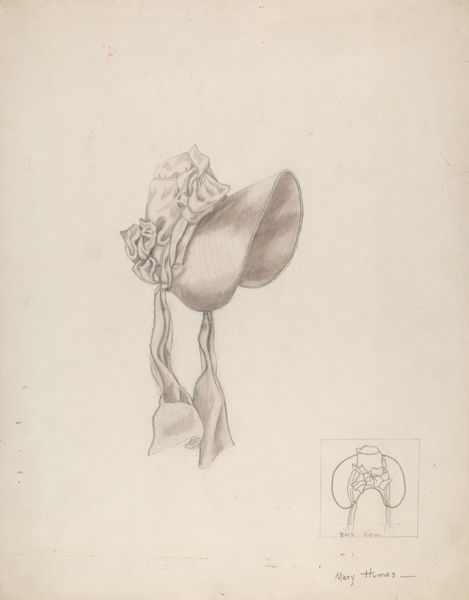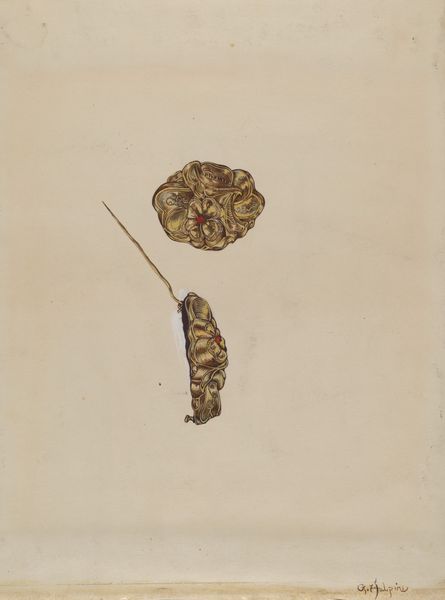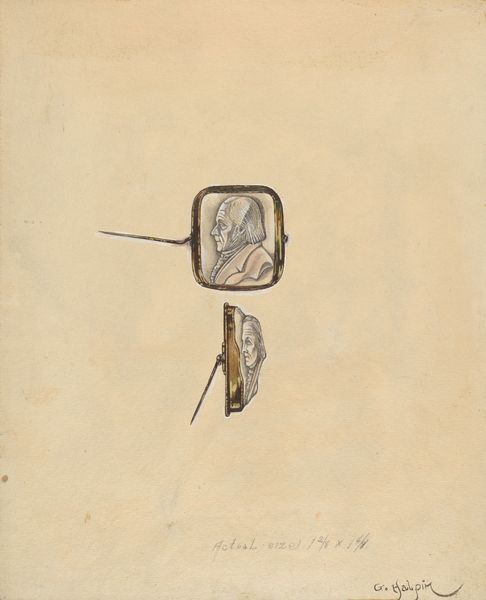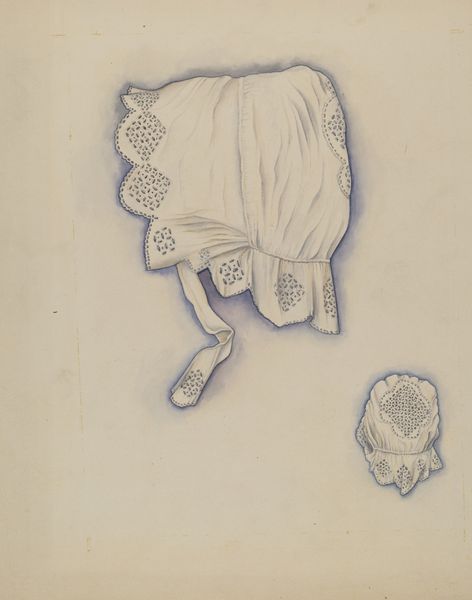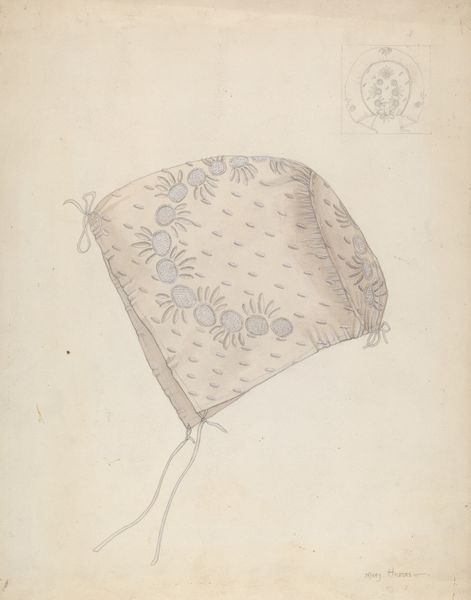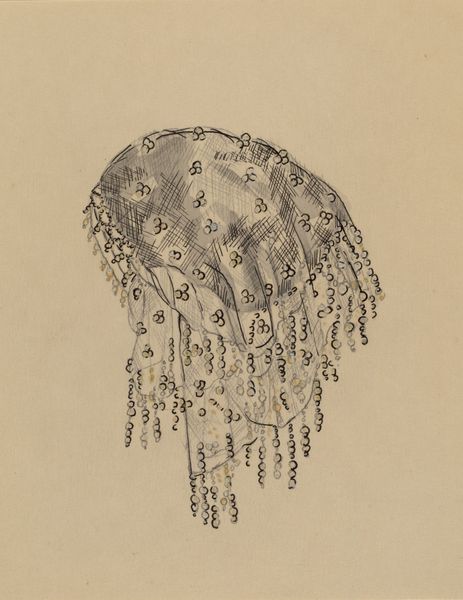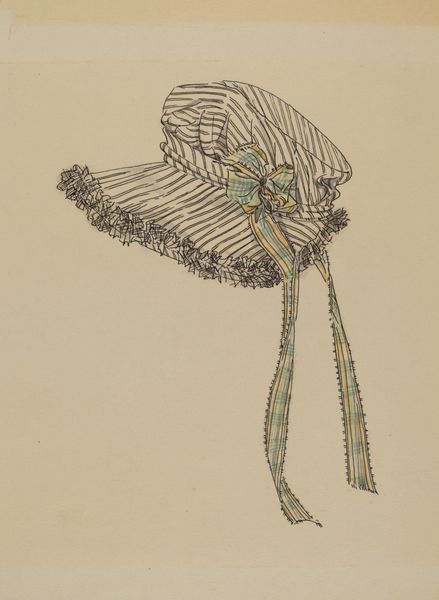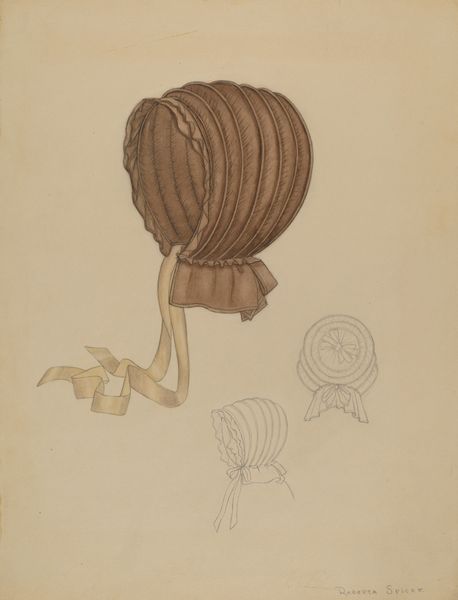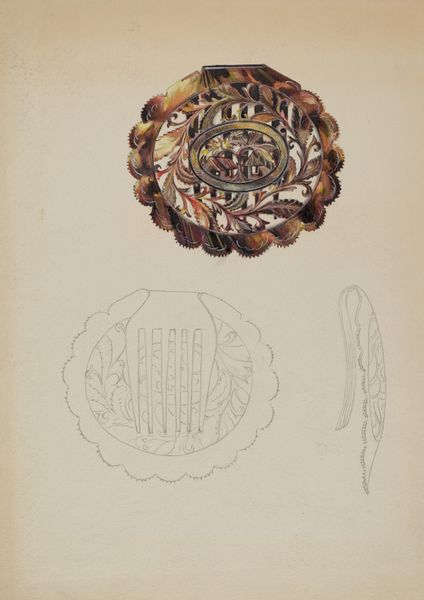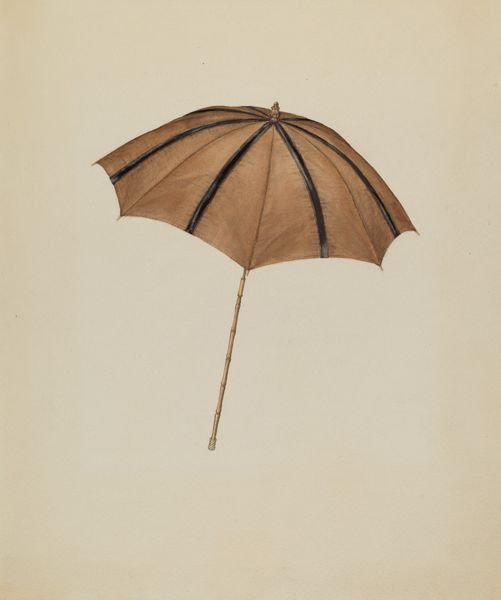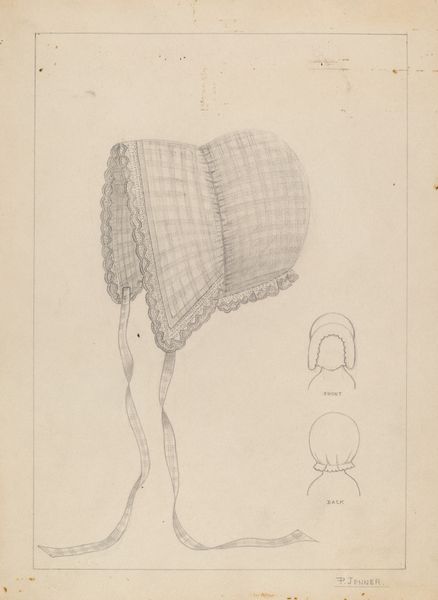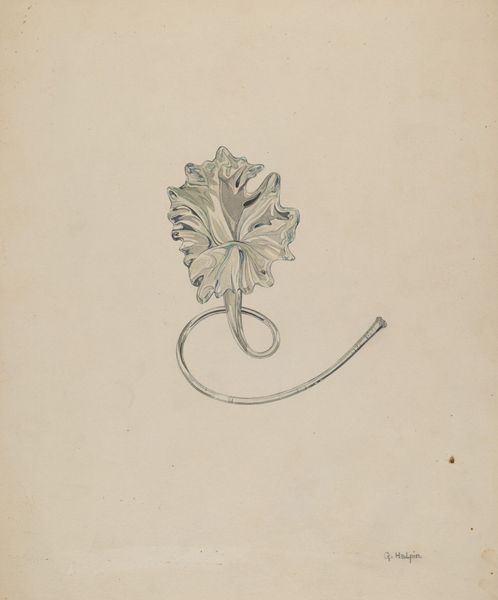
drawing, paper, pencil
#
pencil drawn
#
drawing
#
toned paper
#
light pencil work
#
pencil sketch
#
old engraving style
#
paper
#
personal sketchbook
#
pencil drawing
#
pen-ink sketch
#
pencil
#
sketchbook drawing
#
pencil work
Dimensions: overall: 29.2 x 23.2 cm (11 1/2 x 9 1/8 in.)
Copyright: National Gallery of Art: CC0 1.0
Curator: This drawing, titled "Parasol," was created by Gladys Cook around 1938. It is crafted using pencil on paper. What strikes you first about it? Editor: The sheer detail. The rendering of the lace canopy is intricate, almost obsessive. You can sense the maker's intense focus on texture and pattern. It suggests hours of labor, perhaps even a form of meditation through mark-making. Curator: Indeed. These sketchbooks served as places where Cook diligently practiced her draftsmanship. Think about the social role such an item represented – it was an accessory that spoke to ideas of status and gentility, of women and leisure during that era. Editor: And what of the materials? Pencil and paper: readily available, portable, democratic even. Consider the social circumstances then. The country still suffering the effects of the Depression. Access to expensive painting materials might have been limited. This points toward a practical, resourceful approach to art making. Curator: Precisely! While she was very accomplished in watercolor painting, many works exist that showcase this highly developed practice using simple materials, as you mentioned, as well as found materials. Editor: The unfinished sketch beneath also draws my eye. It is like we are peering into the artist's working process, a glimpse of her methodology and thought. It exposes the labor typically hidden behind a finished artwork. Curator: The parasol, beyond its physical form, represents a carefully constructed image. It's about projecting an image of refinement and elegance during the late 1930s. Think of the impact the fashion industry had in this country during the period; something that could allow for the promotion of an unattainable lifestyle. Editor: Ultimately, that parasol is crafted, literally made by hand, and implies that even in aspirational displays of fashion, labor and process, material, and accessibility should always be brought into the fold when discussing works such as this. Curator: Yes, analyzing Cook’s 'Parasol' encourages us to think about the image as part of a broader network of social and artistic aspirations. Editor: It becomes a document of both a specific object and a way of working, inviting us to appreciate the tactile reality of its creation.
Comments
No comments
Be the first to comment and join the conversation on the ultimate creative platform.

